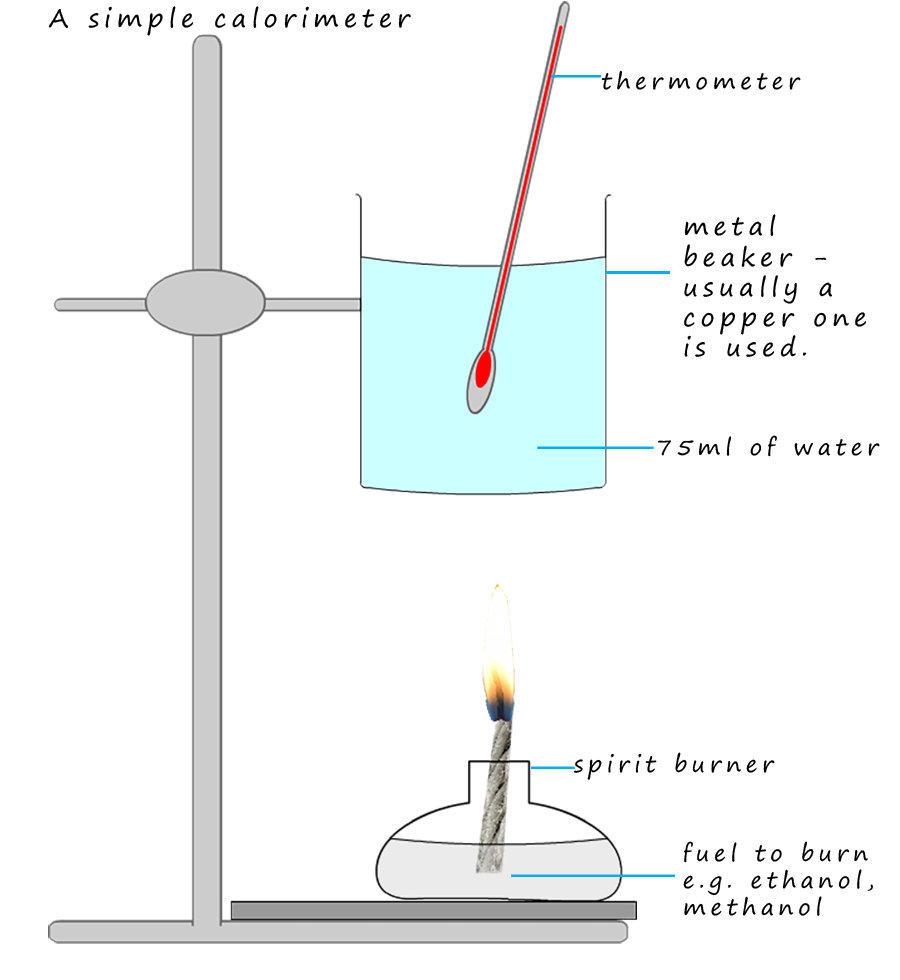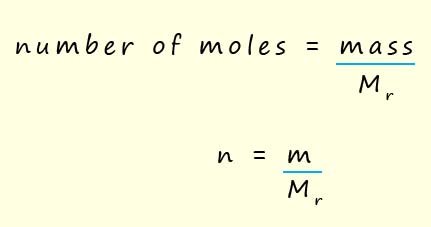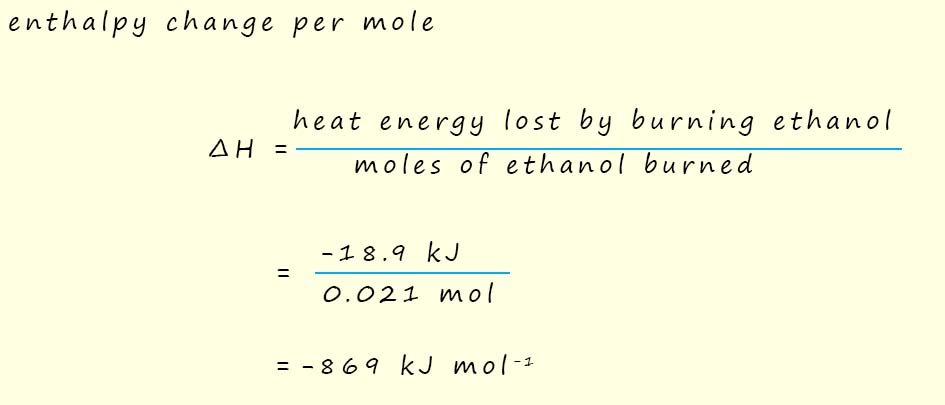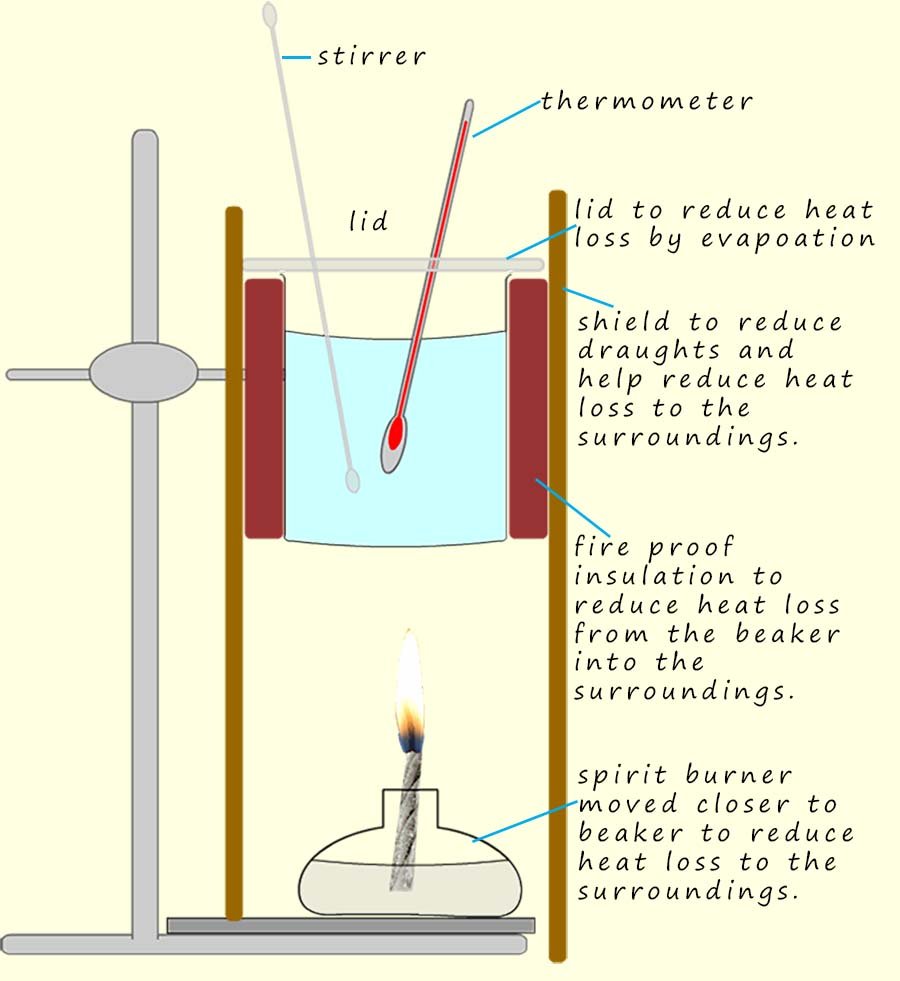

The enthalpy change for a reaction (ΔH) can be calculated by measuring the amount of heat energy given out or taken in during a chemical reaction. Recall that exothermic reactions release heat energy to the surroundings and endothermic reactions remove heat energy from the surroundings, or we can say that in an exothermic reaction the system (reactants and products) loses energy and in an endothermic reaction the system gains energy. The amount of heat energy given out/taken in by a chemical reaction can be determined by measuring a change in temperature (ΔT) in a substance, usually water. The measurement of heat flow is called calorimetry and the instrument used to measure it is called a calorimeter.
When different substances are heated the particles that make them up gain kinetic energy; this results in a temperature rise. However when different substances are heated or supplied with the same amount of heat energy they change temperature by different amounts. The temperature change that a substance undergoes when it is heated is determined by its specific heat capacity (symbol C). The specific heat capacity of a substance is defined as the amount of heat energy needed to raise the temperature of 1 gram of the particular substance by 1 degree Kelvin. Its units are Joules per gram per Kelvin (Jg-1K-1 or kJkg-1K-1). The specific heat capacity of water is 4.18 Jg-1K-1, this means it takes 4.18 Joules of heat energy to raise the temperature of 1g of water by 1 degree Kelvin or 1 degree Celsius. We could of course have units of kJ K-1kg-1 which would mean that the mass of the substance would have to be expressed in kilograms (kg) and the energy in kilojoules (kJ).

Burning fuels is an exothermic reaction. We can use a simple calorimeter like the one shown opposite to calculate the enthalpy of combustion of a fuel such as ethanol or methanol. We can use the equation below to calculate the amount of heat energy that is transferred to the water from the burning fuel:
Where:
1g of ethanol (C2H5OH) was burned in a spirit burner. The burner was used to
heat
100g of water in a beaker. The initial temperature of the water was 250C and the final temperature
was 700C. Calculate the enthalpy change for this combustion reaction.
To calculate the enthalpy change we simply substitute the values into
the above equation. Care must be taken
with units as this will be the most likely cause of an error in your calculations. We will assume that all the heat
energy from the burning ethanol is transferred to the water. So we have:
We can extend this calculation to work out the enthalpy change per mole of ethanol by simply using the formula:

The Mr of ethanol (C2H5OH) is 46, so the
mass of 1 mole of ethanol is 46g. In
the example above 1g of ethanol was burned and this gave an
enthalpy change of -18.9kJ.
So by using the formula above we can easily calculate the number of moles of
ethanol present in 1g:
To calculate the molar enthalpy change (heat energy released by burning
1 mole of ethanol)
we use the formula:

 The actual enthalpy of combustion of ethanol
is -1367 kJ mol-1
The actual enthalpy of combustion of ethanol
is -1367 kJ mol-1
The fact that this is considerably higher than the enthalpy change
calculated above should not be a total surprise since I am sure you can spot many ways in which
heat from the
burning alcohol is lost and not transferred into the water. We have
assumed that all the
heat energy from the burning alcohol flame has been transferred into the water. This
is clearly not the case.
The main area of heat loss is likely to be: